Of all the ecommerce stores that use Google Ads, few start out by asking the important question whether Google Ads is right for their business.
Most of them skip that part and jump straight into the details of picking keywords and writing ads.
But by not asking whether your business has the foundations in place to make Google Ads a success, you’ll find yourself having a hard time.
I’ve experienced this myself by working with certain clients.
Even though I was doing everything right from a Google Ads point of view, I couldn’t get their campaigns profitable.
It was only by taking a step back and looking at the underlying pieces of the business, that I was able to identify why things weren’t working.
And what had to be fixed in order to succeed.
So in this article, we’ll take a look at what’s standing in the way of your success with Google Ads. Be sure to take the Google Ads Test at the end of the article!
- Warning sign #1: Average order value < $75
- Warning sign #2: Low margins gross margins
- Warning sign #3: Monthly search volume < 100
- Warning sign #4: Conversion rate < 1%
- Warning sign #5: Small product catalog
- Your Test Score
Warning sign #1: Average order value < $75
If your average order value is below $75, you will have a hard time competing on Google Ads.
Even if you have a healthy profit margin, the net amount will be insufficient to pay for the product, advertising and give you extra profit.
That’s been my experience with my online store, Apes In Space.
The average order value for 2018 was €28.10, about $32.
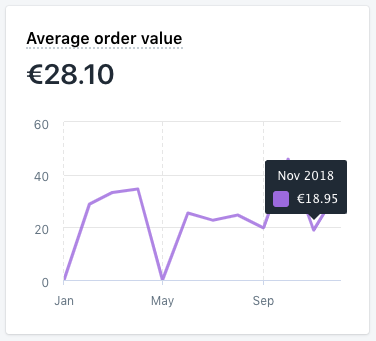
My gross margin on these orders is 40%, about €11 or $13 for every order.
With the average cost per click at €0.22 or $0.25, I can afford to get 44 clicks to make a sale and still break even.
That means I have to hit a conversion rate of at least 2.3%, something I haven’t been able to hit:
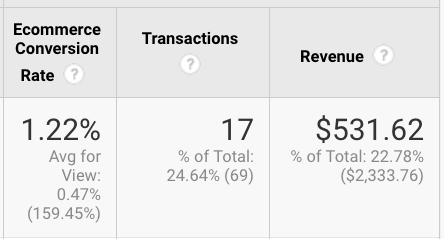
So with these numbers, it’s clear that I can’t afford to run Google Ads for my store.
Doing so would be a constant battle between overall ad spend and revenue.
Some ecommerce stores also have lower order values, but they make it up with a high customer lifetime value. Because it allows them to make the real profits on customers buying again.
In this section, I’m using $75 as the cut-off. Your AOV could be higher or lower, depending on the specifics of your business (margin, conversion rate, lifetime value, etc.).
Our average order value benchmarks seem to confirm it. Search channels hit an AOV of $121.69. Different research shows that the top 25% of online stores have an AOV of $102, while the bottom 25% hover around $75.
So whatever the actual order value of your store, try to increase it, because a higher average order value will give you more margin to work with.
Potential fixes to increase the average order value:
Free shipping cut-off: Instead of offering free shipping on all orders I could try to put that free shipping cut-off at around $35. That could make a lot of people consider adding extra products.
Implementing this might decrease the overall number of conversions, but I will have to see if the increased order value can make up for that.
Bundles: In my poster store, I could create packs that contain 2-5 posters that people frequently buy together.
Cross-selling: I could add more prompts on my products pages or in the checkout flow to encourage people to buy additional or complementary products.
Upselling: I could add the possibility to buy a framed poster when people are in the checkout. This can easily add $100 for some orders.
A wider range of products: depends on the products that you sell. For Apes in Space, I could branch out into different categories like t-shirts or hats.
Warning sign #2: Low gross margins
Your gross margin is what enables you to operate your business. And when it comes to Google Ads, a low margin often prevents you from advertising.
Gross margin overview
- 75%: Very good 🤑
- 40-75%: Good 😎
- 25-40%: Average 🙃
- < 25%: Low 😓
Low margins can be compensated by high volume or high order values.
Amazon, for example, has run its business for years on a gross margin of around 20%. (it hit 27% in Q4 of 2018). But a high order volume meant that its gross profit was still sufficient to run its operations.
Many dropshippers go after the low margin with high order values strategy.
To show you how that works, here are the rough numbers for one of our students, a B2C dropship store:
- AOV: $900
- Gross margin: 20%
- Gross profit: $180 / order
- CPC: $1.5
If they spend all that profit on Google Ads, they get 120 visitors. If they get one sale from that, a conversion rate of 0.83%, they break even.
What can you do to improve your gross margin?
- Improve your product selection: add products to your catalog with better margins to increase the overall margin. This is why there is so much candy in your supermarket’s checkout aisle.
- Save on your product cost: redesigning, looking for different vendors, renegotiating with existing vendors, etc.
Warning sign #3: Monthly search volume < 100
This third warning sign has to do with buying intent.
Are your customers seeking you out? Or do you have to get in front of them to make sales?
You can find out if potential customers are searching for your products through keyword research.
Let’s say you’re selling kitchen equipment, if you do a little bit of research, you can find this list of potential search queries related to “professional blender”:
You immediately see which things people are looking for. In this case, most search queries are related to a specific brand of blenders and their power.
To do this for your own store, you can use a tool like Semrush to plug in a couple of keywords, select your country and look at the search numbers.
Add up the search volumes of your most popular keywords.
If that sum is below 100, you can’t really use Google Ads. There simply won’t be enough searches to make it worth your time.
If you’re having problems with coming with ways to describe your products in a couple of words, chances are your customers will have difficulties as well.
Take for example the Yoga Joes:
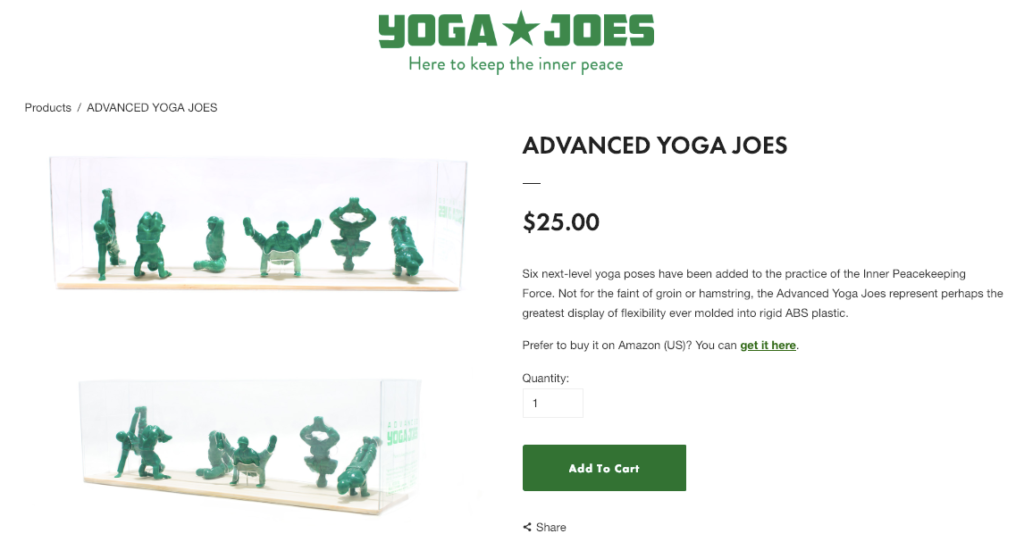
They’re a great little product. But people aren’t really Googling: toy soldiers in yoga poses.
So if you’re selling products like this, you’ll need to find different channels, like Facebook or Instagram.
How to fix this:
- Extend product selection: if you want to use Google Ads (and SEO) to drive sales, you need to find products that your customers are searching for
Warning sign #4: Conversion rate < 1%
I’ve already shown in the section on average order value how vital a good conversion rate is.
That’s because a good conversion rate requires fewer clicks in order to make a sale, resulting in a lower customer acquisition cost.
A less obvious but equally important conversion rate is that of your competitors. Because you are competing with these stores for clicks and sales any difference will have a big impact.
Here is the difference in average conversion rates between the top 25% of online stores and average ones:

That means a top 25% online store converts twice as many customers for the same amount of clicks.
This is HUGE. Because this difference is a flywheel.
If your competitor has twice conversion rate you have, it allows them to outspend you on ads (they got more margin to work with), lower their prices (again because of their margins), invest in other marketing channels (that are unprofitable for you), get volume discounts (better rates from vendors or logistics partners), and so on.
A conversion rate is often a closely guarded secret, so your competitors won’t put it on their website. But try to do some competitive research to find more information.
What can you do to improve your conversion rate?
- Plug your holes: conversion rate optimization, especially at the start, is more often about fixing obstacles that prevent customers from buying
- Increase your conversion rate
Warning sign #5: Small product catalog
In most Google Ads accounts, the biggest potential is in the non-branded search queries.
That’s because there are a lot of people searching that haven’t made up their minds about which product they are going to purchase.
Because of this, it’s also the most competitive part. All advertisers want to be there.
Let’s look the example of shampoo to see what a small catalog has to do with this:
- Advertiser 1: Retailer selling multiple brands and 50+ shampoo products
- Advertiser 2: Brand selling its own line with 1 shampoo product
- Advertiser 3: Brand selling its own line with 5 shampoo products
Advertiser 1 will be able to target a very wide range of searches. If someone clicks on the ads, the chances of them finding a product that matches their expectations (on price, ingredients, type of hair, etc.) will be pretty high.
Advertiser 2 only sells a single product. So the chance that 1 product is a complete match with what they are looking for is pretty slim. This has a serious impact on the conversion rate.
Advertiser 3 also has a limited offering. But because there are multiple products, a potential customer can compare the different products to find one that best matches her needs. The conversion rate will also be lower compared to #1, but already higher than #2.
The way to make money if you’re like advertiser 2 or 3, is to have a very strict selection of the keywords that you advertise on.
Let’s say your hair care brand is all about organic ingredients. You would target search queries that include the words organic or searches like “shampoo without XX”.
This is great because it focuses on who you get onto your site. But there is also a limit to how many searches you can target.
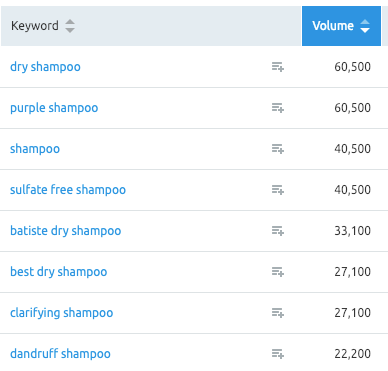
Because some people that type in “shampoo”, might actually want to buy “organic shampoo”.
But as advertiser 2 or 3, it’s just too expensive to advertise on that keyword. Because most of the other clicks won’t result in a sale.
This might seem like a minor thing. But for many clients with a limited catalog, this limited selection is a barrier to growth.
The fix isn’t an easy one. It’s about rethinking the products you offer to appeal to different customer segments.
Take some time to research why potential customers aren’t buying. Maybe they want more features, a bigger package, a lower price, less capacity, etc.
I want to stress that a small product catalog isn’t a bad thing, far from it. But you have to be aware that this will have a big impact on the breadth of search queries you can target.
Unless you have a single product with mass-appeal, something that’s pretty rare.
What’s Your Google Ads Test Score?
Time to put the theory into practice. Take the Google Ads Test:
Let me know in the comments what your score was!
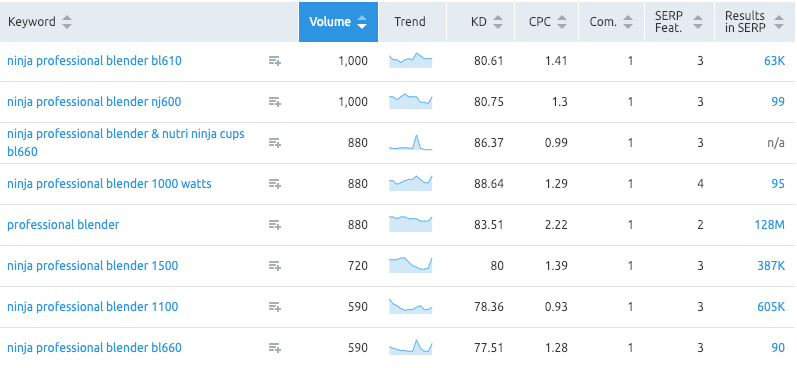

No bull***t and to the point! Great article!
Thanks Vjeko 😊
Really awesome read Dennis. I really love how you tried to be as practical as possible with the details.
Glad to hear you found it helpful Seun!
Hi. Your gross margin calculation contains the VAT or not?
Hi Thomas,
Probably best to take that out.